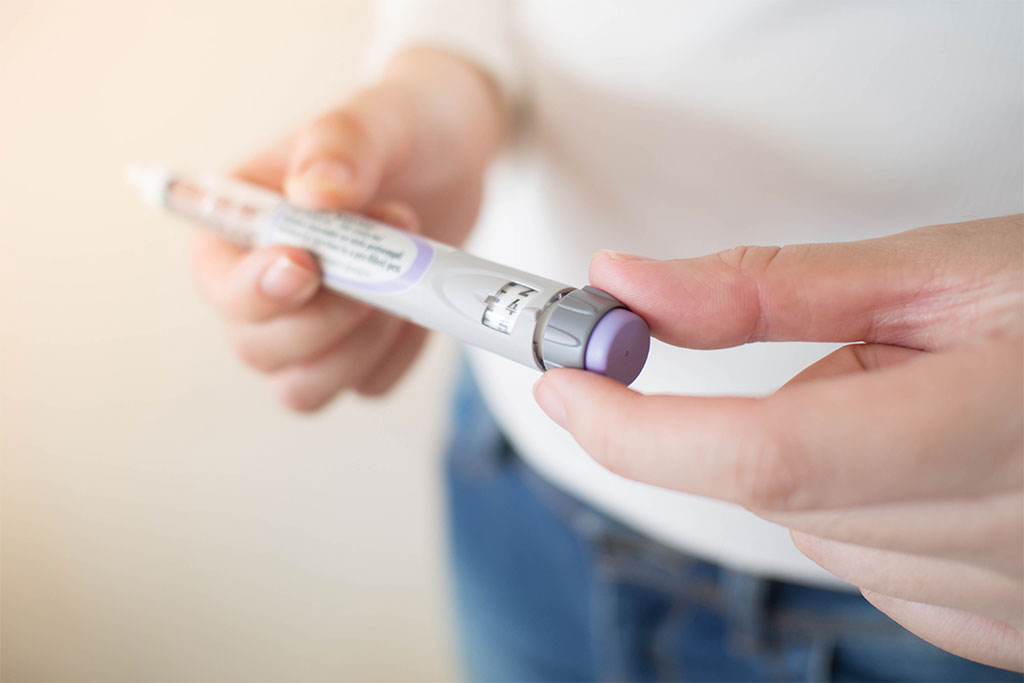

The Pharmaceutical Benefits Scheme (PBS) has recently expanded the listing criteria for Symbicort®. Symbicort® contains the corticosteroid, budesonide plus the long-acting β2-agonist (LABA), formoterol.
The new PBS listing allows Symbicort® to be used as reliever therapy in the management of mild asthma in patients 12 years of age and older who are not currently using a single agent LABA. Previously, Symbicort® was only PBS listed for the treatment of moderate to severe forms of asthma, as well as chronic obstructive pulmonary disease (COPD).
This new PBS listing aligns with the recommendations of the Global Initiative for Asthma which no longer recommends the use of a short-acting β2-agonist alone for adults and adolescents with asthma. Instead, an inhaled corticosteroid plus LABA is their preferred option for symptom relief in these patients. In patients with mild asthma, randomised controlled trials demonstrate that this therapy is associated with a 64% lower rate of severe exacerbations compared to treatment with a short-acting β2-agonist alone.
The following table shows the PBS streamlined authority codes for the different presentations of Symbicort®. Please refer to the PBS website for full clinical criteria.
| Product |
PBS Authority Streamlined Codes |
| Presentation |
Strength |
Mild asthma |
Asthma |
COPD |
| Symbicort® Rapihaler® |
50mcg/3mcg |
|
4397 |
|
| 100mcg/3mcg |
10482 |
4397 |
|
| 200mcg/6mcg |
|
4404 |
10121 |
| Symbicort® Turbuhaler® |
100mcg/6mcg |
|
4380 |
|
| 200mcg/6mcg |
10464 |
7970 |
|
| 400mcg/12mcg |
|
7979 |
10121 |


From 1st July 2020, Lantus® products will no longer be available on the Pharmaceutical Benefits Scheme (PBS). Lantus® contains insulin glargine, a long-acting insulin analogue that is indicated for the management of type 1 and type 2 diabetes mellitus. It is presented as pre-filled pens (Lantus® SoloStar®) and cartridges (Lantus®).
Insulin glargine 100 units/mL will remain on the PBS in the form of Optisulin® and Semglee®. Optisulin® is the same formulation as Lantus® and is available in the same presentation and devices, i.e. the SoloStar® pre-filled pen device, and cartridges for use in the AllStar Pro® or JuniorStar® reusable pens. Semglee® is a biosimilar of Lantus® and is only available in a pre-filled disposable pen device.
Dose adjustments are not required when switching from Lantus® to Optisulin®. Patients should continue to administer their dose at the same time of day and monitor their blood glucose levels as directed by their healthcare professional.
An overview of insulin glargine products available on the PBS from 1st July 2020 is shown in the table below.
| |
Optisulin® |
Semglee® |
Toujeo® |
| Strength |
100units/mL |
100units/mL |
300units/mL |
| Form |
3mL cartridges
3mL pre-filled pen |
3mL pre-filled pen |
1.5mL pre-filled pen |
| Formulation compared to Lantus® |
Identical formulation |
Biosimilar |
N/A |
| Equivalence with Lantus® for the purposes of PBS substitution |
Equivalent
(pre-filled pens ‘a’ flagged, cartridges ‘b’ flagged) |
Equivalent
(pre-filled pens ‘a’ flagged) |
N/A |


The Pharmaceutical Benefits Scheme (PBS) has recently made changes to the listings of some commonly prescribed antibiotics. These updates are in response to a Department of Health review in which one in five repeat antibiotic prescriptions were found to be dispensed more than 30 days after the original prescription. The Pharmaceutical Benefits Advisory Committee (PBAC) recommended changes to reduce unnecessary repeat prescriptions and improve antimicrobial stewardship.
The antibiotics affected are amoxicillin, amoxicillin with clavulanic acid, cefalexin, and roxithromycin. From 1st April 2020, these listings were amended so that the maximum quantity corresponded with a full treatment course for specific indications. New listings for greater quantities and repeats were created that required a valid streamlined authority code. In many of these cases, prolonged oral antibiotic therapy was only subsidised for patients initiated on intravenous therapy.
From 1st May 2020, these new streamlined authority listings were further updated so that prolonged antibiotic therapy is now available to patients regardless of whether treatment was initiated using oral or intravenous therapy.
The PBS website should be consulted for complete clinical criteria.


Neuraminidase inhibitors are a class of medications used in the management of influenza A and B infection. Neuraminidase is an enzyme found on the surface of the influenza virus that is important for the movement of virus particles into target cells and the subsequent release of new virus particles from infected cells. Blocking this enzyme, therefore, inhibits viral replication within the body.
There are currently three neuraminidase inhibitors registered in Australia: oseltamivir, zanamivir, and peramivir. Peramivir is a newer agent that is administered as a single intravenous infusion. It is indicated for the treatment of acute influenza in adults and children from two years of age within 48 hours of symptom onset.
A large double-blind, double-dummy randomised controlled study compared the safety and efficacy of peramivir and oseltamivir. Subjects with confirmed influenza A or B were randomly assigned to receive a single infusion of peramivir (300mg or 600mg) or a five-day course of oseltamivir. This study concluded that peramivir is non-inferior to oseltamivir for the primary endpoint of time to alleviation of symptoms. In regards to safety, the overall incidence of adverse reactions was lower in the peramivir groups, although the rate of severe adverse reactions was similar across all groups. Surveillance data may be consulted for current information on local epidemiology and resistance profile of the circulating influenza strain.
A brief overview of the different neuraminidase inhibitors is shown in Table 1.
| |
Peramivir |
Oseltamivir |
Zanamivir |
| Indications |
Treatment of influenza |
Treatment and prevention of influenza A and B |
| Approved population |
Adults and children ≥ 2 years |
Adults and full-term neonates |
Adults and children ≥ 5 years |
| Route |
IV infusion |
Oral |
Inhalation |
| Typical adult treatment dose |
600mg |
75mg twice daily |
2 inhalations twice daily |
| Duration of treatment |
Single-dose |
5 days |
| Presentation |
Vial
|
Capsules
Oral liquid |
Rotadisks + Diskhaler device |


The coronavirus disease (COVID-19) pandemic is presenting a range of challenges to healthcare professionals. One of the biggest issues in any rapidly evolving space is the ability to access current and reliable information.
A number of peak Australian health professional groups have collaborated to form the National COVID-19 Clinical Excellence Taskforce. This new taskforce aims to translate emerging research and data into practical, evidence-based guidelines. The first set of national clinical guidelines for the care of people with COVID-19 is now available. These guidelines are referred to as “living guidelines” as they will be continuously revised and updated as new evidence comes to light. Clinicians are encouraged to submit key questions online to notify the taskforce of areas that require further guidance.
This may also be an opportune time for healthcare professionals to refresh their knowledge and understanding of infection control principles. The Australian Commission on Safety and Quality in Healthcare provides a suite of eLearning modules supported by the Infection Prevention and Control Workbook. These modules cover topics such as hand hygiene and the use of personal protective equipment. All content is based upon the Australian Guidelines for the Prevention and Control of Infection in Healthcare (2019). Consistent implementation of these guidelines will improve patient outcomes and ensure a safer environment for all healthcare workers.


The Therapeutic Goods Administration (TGA) has issued an alert advising of new prescribing restrictions for hydroxychloroquine. These restrictions have been introduced following reports of increased off-label prescribing for the management of coronavirus disease (COVID-19), which have led to concerns of supply interruptions.
Several small studies suggest that hydroxychloroquine and the similar agent chloroquine (not marketed in Australia) could be effective against COVID-19. Interest in chloroquine for COVID-19 may stem from a study that found the agent to be effective in preventing the replication of coronavirus (SARS-CoV) in vitro. However, the evidence for effectiveness in COVID-19 is considered limited and clinical trials are continuing around the world. Clinical trials are also set to begin in Australia following announcements by the University of Queensland and the Walter and Eliza Hall Institute in Melbourne.
To prevent stock shortages related to a sudden increase in demand, the TGA has amended the Poisons Standard. As of 24 March 2020, hydroxychloroquine can only be initiated by medical practitioners specialising in the following fields:
- Dermatology;
- Intensive care medicine;
- Paediatrics and child health;
- Physician; or
- Emergency medicine.
Other medical practitioners can continue to prescribe repeats for hydroxychloroquine for patients initiated on therapy prior to 24 March 2020, in line with the registered indications. Hydroxychloroquine is currently registered in Australia for the treatment of rheumatoid arthritis, mild systemic and discoid lupus erythematosus, and the suppression and treatment of malaria.


The Australian Technical Advisory Group on Immunisation (ATAGI) has released its advice for the administration of seasonal influenza vaccines in 2020. Influenza vaccines used in Australia this year will be quadrivalent and comprise two A strains (H1N1 and H3N2) and two B strains. The influenza vaccines registered for use in 2020 are shown in Table 1.
Table 1. Influenza vaccines registered for use in Australia in 2020
| Product |
Type |
Registered age group |
| FluQuadri® |
Split virion |
Adults and children ≥ 6 months |
| Vaxigrip® Tetra |
Split virion |
Adults and children ≥ 6 months |
| Fluarix® Tetra |
Split virion |
Adults and children ≥ 6 months |
| Influvac® Tetra |
Surface antigen |
Adults and children ≥ 3 years |
| Afluria® Quad |
Split virion |
Adults and children ≥ 5 years |
| Fluad® Quad |
Surface antigen, adjuvanted |
Adults ≥ 65 years |
Significant changes for the 2020 season include:
- All children aged six months to less than five years are eligible to receive an influenza vaccine funded through the National Immunisation Program (NIP);
- The registered age range for FluQuadri® has been extended to include children from six months of age. FluQuadri® Junior is no longer available;
- The registered age range for Influvac® Tetra has been extended to include children from three years of age; and
- The dose for all influenza vaccines is now 0.5mL regardless of patient age.
With the novel threat of coronavirus disease (COVID-19), the influenza vaccination program may be particularly important this year in reducing the risk of severe illness and hospitalisation. Information on patient eligibility under the NIP can be obtained from the Department of Health. Individual product information documents should be consulted for further details.


A generic tiotropium capsule has recently been added to the Pharmaceutical Benefits Scheme (PBS). Braltus® capsules are considered equivalent to Spiriva® capsules for the purposes of brand substitution on the PBS. However, some important differences should be noted to avoid confusion.
Braltus® capsules for inhalation contain 13 micrograms of tiotropium, while Spiriva® contains 18 micrograms per capsule. However, the dose delivered from the mouthpiece of the inhaler device is 10 micrograms per capsule for each brand. Braltus® is able to provide the same delivered dose from a smaller formulated dose due to the enhanced aerosolisation properties of the formulation.
Braltus® capsules should only be administered using the Zonda® inhaler device included in each pack. While the Zonda® device is operationally similar to the Spiriva® HandiHaler® device, the devices are not interchangeable. Patients should be educated on proper inhaler technique for each device they use.
A comparison of the two brands of tiotropium capsules is shown below.
| |
Braltus® |
Spiriva® |
| Active ingredient |
Tiotropium (as bromide) |
Tiotropium (as bromide monohydrate) |
| Tiotropium per capsule |
13mcg |
18mcg |
| Tiotropium delivered dose per capsule |
10mcg |
| Recommended dose |
1 capsule inhaled daily |
| Indications |
Long-term maintenance treatment of bronchospasm and dyspnoea associated with COPD; prevention of COPD exacerbations |
| Device |
Zonda® |
HandiHaler® |
| Device maintenance |
Discard device after 30 uses. New device supplied with each pack. |
Device can be washed and re-used |
| Presentation |
Bottle, clear capsules |
Blister pack, green capsules |


Topical corticosteroids have long been the mainstay of treatment for dermatitis that does not respond to moisturisers and emollients. Crisaborole is a new non-steroidal option approved for use in mild to moderate atopic dermatitis in patients two years of age and older. Although its precise mechanism of action is not well defined, crisaborole inhibits phosphodiesterase-4 (PDE-4) which leads to reduced secretion of pro-inflammatory cytokines such as tumour necrosis factor-alpha (TNFα).
Crisaborole ointment is applied as a thin layer to the affected areas twice daily. The ointment can be used on all skin areas, including the face and intertriginous areas. Two large randomised, vehicle-controlled clinical trials demonstrate the efficacy of crisaborole. These studies show a significant improvement in disease severity from day eight of treatment and an early and sustained improvement in pruritus in patients treated with crisaborole compared to the vehicle-treated group. The efficacy of crisaborole has not been studied beyond a 28-day treatment course in a controlled trial. However, an open-label extension trial suggests that multiple treatment courses over an extended period may be an effective treatment option that avoids the potential concerns of long-term corticosteroid therapy.
Approximately 25% of the crisaborole dose is absorbed following topical administration. However, the potential for systemic effects is limited as crisaborole is rapidly and substantially metabolised into inactive metabolites. Application site pain was the only treatment-related adverse event associated with crisaborole therapy in two pivotal trials.


Pembrolizumab is now available on the Pharmaceutical Benefits Scheme (PBS) for the first-line treatment of metastatic non-small cell lung cancer (NSCLC) irrespective of programmed death ligand-1 (PD-L1) status.
In the KEYNOTE-189 trial, pembrolizumab was used in conjunction with pemetrexed and platinum chemotherapy in metastatic NSCLC irrespective of PD-L1 status, opening up a new standard of care for these patients. The median duration follow-up was 18.7 months, and pembrolizumab was associated with a significantly longer overall survival (22.0 versus 10.7 months) compared to pemetrexed and platinum-based chemotherapy alone.
The incidence of treatment-related adverse effects was similar between the treatment arms. However, immune-mediated adverse effects including hypothyroidism and hyperthyroidism, pneumonitis, skin toxicity, colitis and infusion reactions, were markedly higher with the pembrolizumab combination at 22.7% and chemotherapy at 11.9%.




















